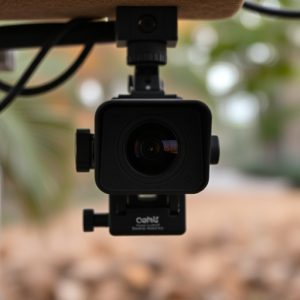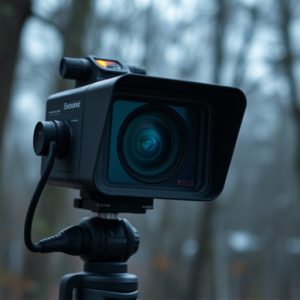Counter Surveillance Guide: Spotting Hidden Cameras in Airbnb Properties
In the digital age, safeguarding privacy on Airbnb is vital. To spot spy cameras in properties, cond…….
In the digital age, safeguarding privacy on Airbnb is vital. To spot spy cameras in properties, conduct thorough visual inspections, checking common placement areas like door handles, windowsills, and electronic devices. Use specialized tools such as thermal imaging cameras, UV lights, and RF sweep devices to detect hidden cameras, revealing heat signatures or reflective lenses. Integrate technological methods with meticulous checks for optimal security. For professionals, these counter-surveillance techniques are crucial; UV lights expose faint glows from spy cams, while thermal imaging detects temperature anomalies. After sweeping, establish post-sweep procedures: document findings, deactivate equipment, and educate users on regular inspections to maintain a secure Airbnb environment.
Uncover the hidden eyes: navigate the intricate world of counter surveillance sweeps, especially within Airbnb properties. This comprehensive guide equips professionals with strategies to detect sophisticated spy cameras, ensuring guest privacy. From understanding camera placement tactics to advanced detection techniques, we delve into essential tools and step-by-step physical inspections. Learn post-sweep procedures for long-term privacy maintenance, transforming your Airbnb hosting experience. Discover the key to spotting spy cameras and rest easy knowing your guests’ safety.
- Understanding Spy Cameras and Their Placement in Airbnb Properties
- Essential Tools for a Counter Surveillance Sweep
- Step-by-Step Guide to Physically Inspecting the Space
- Advanced Techniques for Detecting Hidden Cameras
- Post-Sweep Procedures and Maintaining Privacy Long-Term
Understanding Spy Cameras and Their Placement in Airbnb Properties
Understanding Spy Cameras and Their Placement in Airbnb Properties
In today’s digital age, privacy concerns are paramount, especially when renting through platforms like Airbnb. One of the most insidious methods used by malicious individuals to invade guest privacy is the installation of hidden or spy cameras in rental properties. These devices can be incredibly tiny, blending seamlessly into everyday objects like light bulbs, smoke detectors, or even mirror frames. Knowing how to spot these covert surveillance tools is essential for anyone renting an Airbnb to ensure their safety and privacy.
Airbnb properties often attract a diverse range of guests, making them prime targets for individuals looking to exploit security vulnerabilities. It’s crucial for both property owners and renters to be vigilant in identifying potential spy cameras. Common places where these devices are hidden include door handles, windowsills, inside or near bathroom mirrors, and even within seemingly innocuous electronic devices like TVs or sound systems. By being aware of these common placement methods, Airbnb users can conduct thorough inspections and use specialized tools to detect any suspicious hardware, thereby safeguarding their personal information and experiences during their stay.
Essential Tools for a Counter Surveillance Sweep
When conducting a counter surveillance sweep, especially in locations like short-term rentals like Airbnb, professionals rely on a specific set of tools to effectively detect hidden cameras. The first essential tool is a thermal imaging camera, which can identify heat signatures that may indicate the presence of surveillance devices. This technology is particularly useful for spotting small, discreet cameras that are often placed in hard-to-see areas.
Additionally, professionals use advanced metal detectors and RF (radio frequency) sweep tools to detect any electronic signals emanating from hidden cameras. These tools allow them to scan through walls, floors, and ceilings to uncover potential surveillance equipment. How to Spot Spy Cameras Airbnb becomes less of a challenge with these professional-grade instruments that are designed to disrupt and detect even the most sophisticated spying mechanisms.
Step-by-Step Guide to Physically Inspecting the Space
To physically inspect a space for spy cameras, especially in the context of Airbnb rentals, start by conducting a meticulous visual scan. Begin at eye level and move methodically around the room, noting any unusual or unexpected objects. Check common spots like corners, behind furniture, and on or near light fittings, as these are popular locations for hidden cameras. Look for small, discreet devices, and remember that modern spy cams can be virtually invisible to the naked eye.
Next, use specialized tools designed for such inspections, such as infrared cameras and long-range UV lights, which can reveal heat signatures or reflect off reflective lenses not visible to the human eye. Pay close attention to areas with electronic devices, like TVs or computers, as they might be equipped with hidden cameras. By combining thorough visual inspection with technological aids, you can effectively identify potential spy cameras in any Airbnb property.
Advanced Techniques for Detecting Hidden Cameras
When it comes to counter surveillance, detecting hidden cameras is a critical skill for professionals. One effective method involves utilizing specialized UV light devices that can reveal covert recording equipment. Many modern spy cameras emit a faint glow in the ultraviolet spectrum, making them visible to the right tools. By sweeping the area with UV lights, experts can uncover tiny cameras often hidden within everyday objects like light bulbs or smoke detectors.
Additionally, professionals employ advanced thermal imaging technology to detect temperature anomalies that might indicate the presence of a spy camera. These devices capture heat signatures, allowing users to identify suspicious devices that draw power, even when they’re not actively recording. This technique is particularly useful in locations like Airbnb rentals, where hidden cameras have been known to be strategically placed in seemingly innocent items.
Post-Sweep Procedures and Maintaining Privacy Long-Term
After a counter surveillance sweep, it’s crucial to establish clear post-sweep procedures to maintain privacy long-term. Begin by thoroughly documenting the findings from the sweep, including any discovered spy cameras or tracking devices. This detailed record will serve as a reference for future inspections and help identify recurring issues. Next, implement immediate deactivation protocols for all detected surveillance equipment. This may involve physically removing hidden cameras or disabling connected devices. It’s essential to inform relevant parties, such as property owners or Airbnb hosts, about the sweep results and take-up necessary precautions.
To safeguard privacy over the long haul, consider implementing a regular inspection schedule. Regularly checking for potential spy cameras, especially in frequently accessed areas like bedrooms and bathrooms, can help prevent undetected reinstallation. Additionally, educate yourself and others on how to spot spy cameras in Airbnb accommodations during stays. Look for signs of tampering or unusual fixtures, and report any suspicions to the host immediately. Proactive measures combined with regular maintenance will ensure a more secure environment, protecting personal information and privacy.
Protecting your privacy in today’s digital age is paramount, especially when renting through platforms like Airbnb. By understanding how spy cameras can be hidden and employing professional counter surveillance techniques, you can ensure a safe stay. The step-by-step guide provided offers practical knowledge on detecting these devices, making it easier for folks to navigate and trust their accommodations. Remember that being vigilant and knowledgeable about How to Spot Spy Cameras Airbnb is a powerful tool in maintaining your personal space and privacy.


